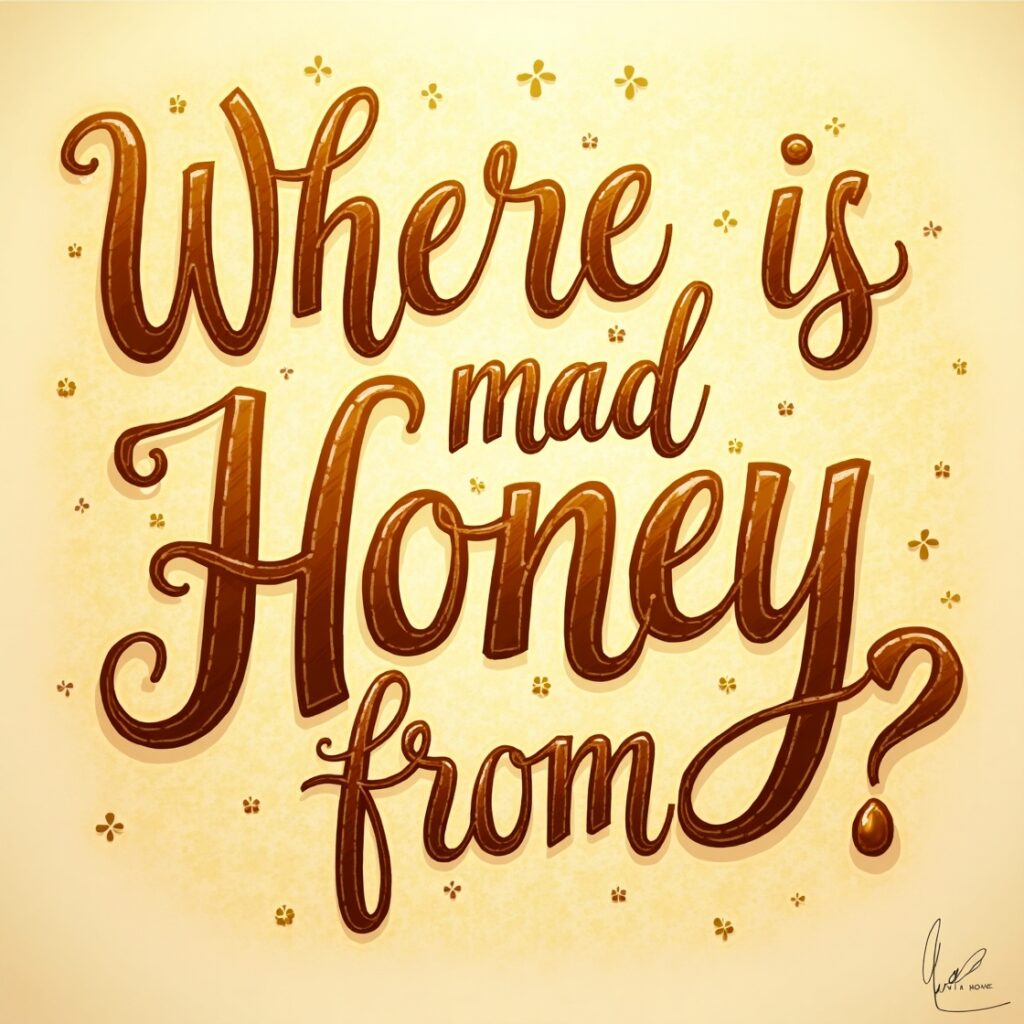
Where is Mad Honey From ?Mad honey—known for its reddish hue, bitter taste, and psychoactive effects—has captivated explorers, healers, and thrill-seekers for centuries. But where does this rare honey come from, and why is it so potent? In this comprehensive guide, we’ll explore the origins of mad honey, its cultural significance, and the regions where it is produced.
🐝 What Is Mad Honey?
Mad honey is produced by bees that collect nectar from certain Rhododendron species, particularly Rhododendron ponticum and Rhododendron luteum. These plants contain grayanotoxins, which can cause a range of effects from mild euphoria to severe poisoning.
🌿 Traditional Uses
- Used in Turkish and Nepali folk medicine to treat hypertension, diabetes, and arthritis
- Consumed recreationally for its hallucinogenic effects
- Historically used as a weapon—ancient armies reportedly poisoned enemies with it
⚠️ Health Risks
Symptoms of grayanotoxin poisoning include:
- Dizziness and nausea
- Bradycardia (slow heart rate)
- Hypotension (low blood pressure)
- Blurred vision and hallucinations
- In severe cases, seizures or loss of consciousness
Most symptoms subside within 12–24 hours, but medical attention is advised for severe reactions.
🌍 Regions Where Mad Honey Is Produced
Where is Mad Honey From this list exactly show from where.
🇳🇵 Nepal
- Primary Regions: Himalayan foothills, particularly in the districts of Lamjung and Kaski
- Bee Species: Himalayan giant honeybee (Apis laboriosa)
- Harvesting Practices: Traditional honey hunters, known as the Gurung people, scale cliffs to collect honey
- Cultural Significance: Used in rituals and traditional medicine
- Challenges: Climate change and overharvesting have led to a decline in bee populations
🇹🇷 Turkey
- Primary Regions: Black Sea region, especially in the provinces of Rize and Trabzon
- Bee Species: Caucasian honeybee (Apis mellifera caucasica)
- Harvesting Practices: Beekeepers collect honey from hives located in high-altitude forests
- Cultural Significance: Known as “deli bal,” it is used in traditional medicine and as an aphrodisiac
- Challenges: Cases of mad honey poisoning are reported due to unregulated consumption
🌺 Rhododendron Species Involved in its Production
- Rhododendron ponticum: Found in Turkey and Georgia
- Rhododendron luteum: Common in the Black Sea region
- Rhododendron arboreum: Nepal’s national flower, prevalent in the Himalayas
- Rhododendron campanulatum: Found in the Himalayan region
- Rhododendron barbatum: Native to Nepal
- Rhododendron lepidotum: Grows in subalpine regions of Nepal
- Rhododendron anthopogon: Found at higher altitudes in Nepal
Effects of Consuming Mad Honey
- Mild Consumption:
- Euphoria
- Dizziness
- Nausea
Moderate Consumption:
- Hallucinations
- Low blood pressure
- Slow heart rate
Severe Consumption:
- Loss of consciousness
- Seizures
- Cardiac arrhythmia
📜 Historical Accounts of Rhododendron Honey
- 401 BCE: Greek soldiers led by Xenophon consumed mad honey in Turkey, leading to disorientation and incapacitation.
- 67 BCE: King Mithridates VI used mad honey as a biological weapon against Roman soldiers.
- 18th Century: Mad honey was imported to Europe and added to alcoholic beverages for its intoxicating effects.
Why it is Popular ?
Mad honey is gaining attention worldwide, but it’s not just a rare substance—it’s deeply tied to traditions that span generations. In places like Nepal, Turkey, it is more than just something you consume; it’s part of the culture. In Nepal, for example, honey hunting is a unique tradition for the Gurung people, while in Turkey, “deli bal” is valued for its supposed healing powers. But as intriguing as it is, mad honey can be dangerous if consumed without understanding its potent effects.
With more people seeking out this elusive honey, there’s a growing concern over its sustainability. Overharvesting, coupled with climate changes affecting the rhododendron plants that produce it, puts pressure on both the bees and the ecosystems they support. The future of this relies on balancing its cultural importance with the need for conservation, ensuring that this natural resource can be enjoyed responsibly for years to come.
Final Thoughts
Mad honey’s origins are deeply rooted in the cultures and landscapes of Nepal, Turkey. Its unique properties have made it both a revered traditional remedy and a subject of scientific interest. As with any potent natural substance, it’s essential to approach mad honey with respect and awareness of its effects.